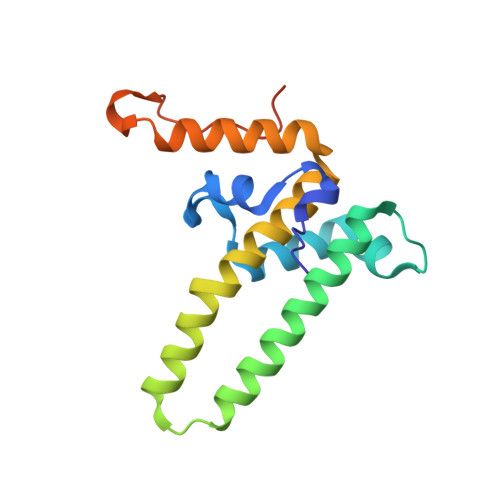Design and Synthesis of Orally Bioavailable 4-Methyl Heteroaryldihydropyrimidine Based Hepatitis B Virus (HBV) Capsid Inhibitors
Qiu, Z., Lin, X., Zhou, M., Liu, Y., Zhu, W., Chen, W., Zhang, W., Guo, L., Liu, H., Wu, G., Huang, M., Jiang, M., Xu, Z., Zhou, Z., Qin, N., Ren, S., Qiu, H., Zhong, S., Zhang, Y., Zhang, Y., Wu, X., Shi, L., Shen, F., Mao, Y., Zhou, X., Yang, W., Wu, J.Z., Yang, G., Mayweg, A.V., Shen, H.C., Tang, G.(2016) J Med Chem 59: 7651-7666
- PubMed: 27458651
- DOI: https://doi.org/10.1021/acs.jmedchem.6b00879
- Primary Citation of Related Structures:
5GMZ - PubMed Abstract:
Targeting the capsid protein of hepatitis B virus (HBV) and thus interrupting normal capsid formation have been an attractive approach to block the replication of HBV viruses. We carried out multidimensional structural optimizations based on the heteroaryldihydropyrimidine (HAP) analogue Bay41-4109 (1) and identified a novel series of HBV capsid inhibitors that demonstrated promising cellular selectivity indexes, metabolic stabilities, and in vitro safety profiles. Herein we disclose the design, synthesis, structure-activity relationship (SAR), cocrystal structure in complex with HBV capsid proteins and in vivo pharmacological study of the 4-methyl HAP analogues. In particular, the (2S,4S)-4,4-difluoroproline substituted analogue 34a demonstrated high oral bioavailability and liver exposure and achieved over 2 log viral load reduction in a hydrodynamic injected (HDI) HBV mouse model.
Organizational Affiliation:
Roche Innovation Center Shanghai, ‡Medicinal Chemistry, §Chemical Biology, ∥Pharmaceutical Sciences, and ⊥Discovery Virology, Roche Pharma Research and Early Development , 720 Cailun Road, Shanghai, 201203 China.


















